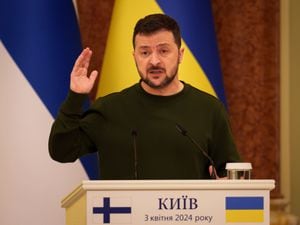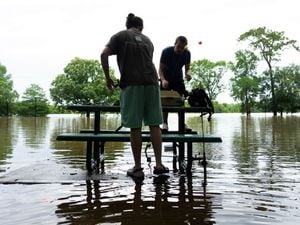US and EU announce new partnership to undercut Russian energy
US president Joe Biden was set to discuss the issue with EU executive head Ursula von der Leyen.

The United States and European Union on Friday announced a new partnership to reduce the continent’s reliance on Russian energy, the start of a years-long initiative to further isolate Moscow after its invasion of Ukraine.
As part of the plan, the US and other nations will increase liquified natural gas exports to Europe by 15 billion cubic metres this year, the White House said. Even larger shipments would be delivered in the future.
At the same time, they will try to keep their climate goals on track by powering gas infrastructure with clean energy and reducing methane leaks that can worsen global warming.
Although the initiative is likely to require new facilities for importing liquified natural gas, the partnership is also geared toward reducing reliance on fossil fuels in the long run through energy efficiency and alternative sources of energy, according to the White House.
US president Joe Biden was set to discuss the issue with Ursula von der Leyen, head of the European Union’s executive arm, before leaving for Poland, the final leg of his four-day trip.
Earlier this week, Ms von der Leyen said “we are aiming at having a commitment for additional supplies for the next two winters”.
Jake Sullivan, Mr Biden’s national security adviser, recently told reporters that the administration wants to quickly “surge” gas to Europe.
Russian energy is a key source of income and political leverage for Moscow. Almost 40% of the European Union’s natural gas comes from Russia to heat homes, generate electricity and power industry.
After leaving Brussels, Mr Biden travels to Rzeszow in Poland, where US troops are based roughly an hour’s drive from the Ukrainian border.
Mr Biden is then expected to continue on to Warsaw for talks on Saturday with Polish president Andrzej Duda.
Getting more liquefied natural gas to Europe could be difficult, even though the US has been dramatically increasing its exports in recent years. Many export facilities are already operating at capacity, and most new terminals are still only in the planning stages.
Most US shipments already go to Europe, according to the Centre for Liquefied Natural Gas, an industry lobbying group. Although much of the supply is already contracted out to buyers, there are still opportunities to shift its destination.
“The US is in a unique position because it has flexible LNG that can be rerouted to Europe or to Asia, depending on who’s willing to pay that price,” said Emily McClain, gas markets analyst at Rystad.
Even if the US can ship more gas to Europe, the continent may struggle to receive it. Import terminals are located in coastal areas, where there are fewer pipeline connections for distributing it.
Even if all Europe’s facilities were operating at capacity, the amount of gas would probably be only about two-thirds of what Russia delivers through pipelines.





